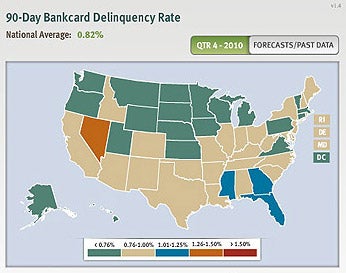[Disclosure: Our partners are mentioned below.]
A new study from TransUnion claims that there are eight million inactive credit card accounts in the U.S. today. The whopping number of inactive accounts likely triggered a 24.6% slide in U.S. credit card delinquency rates, according to the TransUnion study.
Financial demographics play a big role, too. Most of those eight million inactive card users are in the “high risk” category, TransUnion says. But consumers are tightening their belts across all card categories.
“This deleveraging is believed to be due in part to charge-offs in the higher risk segments of the population, more conservative spending in the low-risk segments, and significant efforts by consumers across the board to maintain the health of their credit card relationships as a financial cushion,” the report states. “Based upon income levels estimated by TransUnion’s income estimation model, consumers with higher incomes were just as likely as consumers with lower incomes to suspend their use of this payment option.”
Interestingly, the absence of eight million card users has not really hit the major card providers where it hurts—in the bottom line.
In the fourth quarter of 2010, American Express reported a 48% surge in earnings. JP Morgan Chase reported a 47% uptick in earnings over the same period, while Capital One saw its profits rise by 85%.
Still, card companies will be hard pressed to match those numbers in future quarters. A separate study from TransUnion concludes that consumers are increasingly turning away from credit cards and toward cash and debit cards. That means there is less demand for credit, and less customers for the industry.
“The gradual decline in the (TransUnion) Credit Risk Index, coupled with a 5.4 percent decrease in the demand for credit over the previous year suggests that consumers are relying more on existing credit or switching to cash or debit cards,” notes Chet Wiermanski, global chief scientist at TransUnion. “While more consumers will have stronger credit profiles making them attractive to credit marketers, the underlying demand for credit appears to still be soft.”
You don’t need an economist to tell you that a soft market equal soft profits—but that could frame the short-term financial future for credit card companies.
[Free Tool: Obtain your Identity Risk Score from Credit.com]
Main page image: Paul Stocker
You Might Also Like
April 9, 2024
Credit Cards
October 21, 2020
Credit Cards
August 3, 2020
Credit Cards






